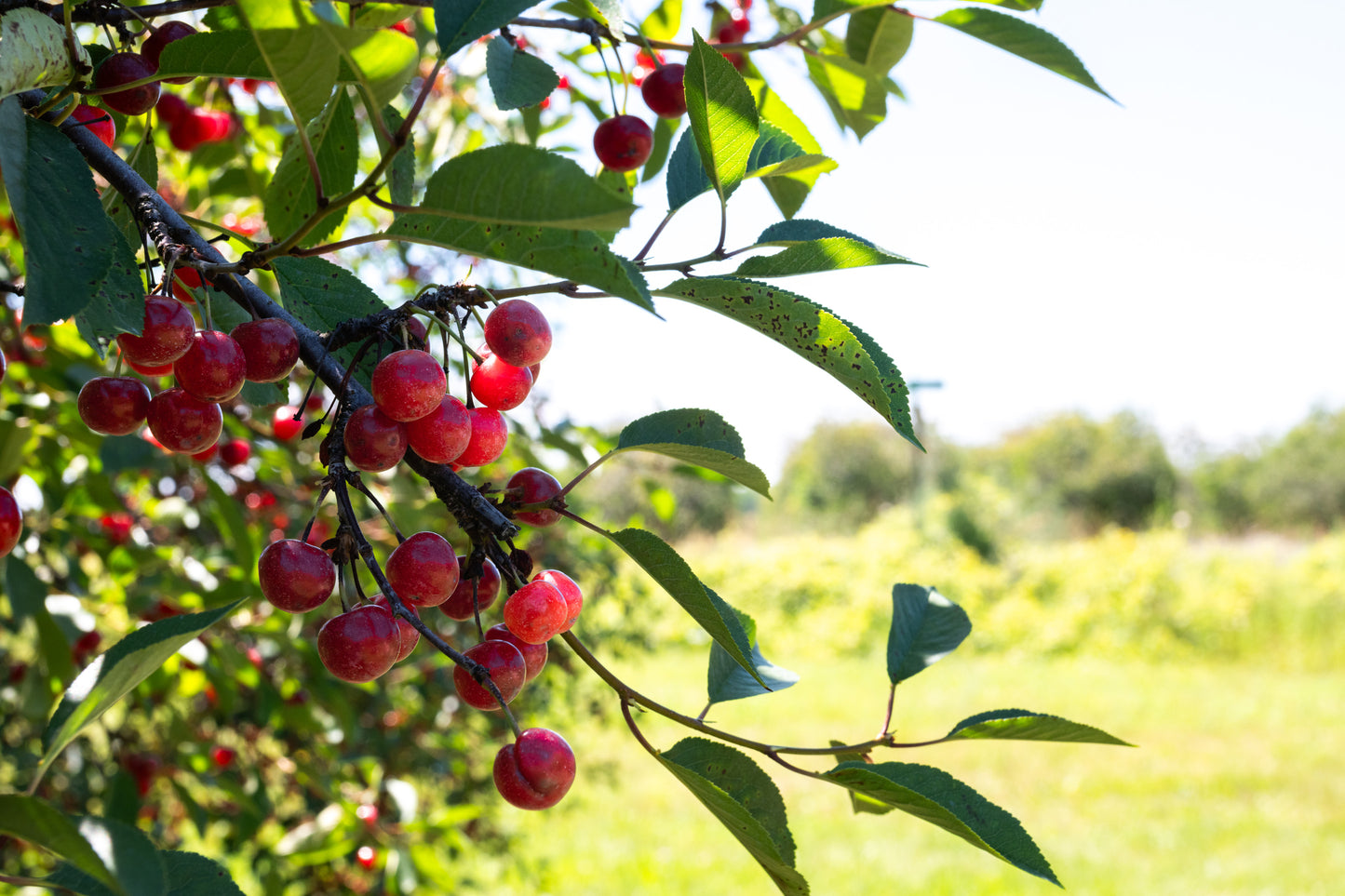Cherries
Cherries
Couldn't load pickup availability
Clusters of ripe, red cherries hang heavily from the branches, their glossy skins reflecting the summer sun. Just days away from harvest, they dangle in anticipation, waiting for the careful hands that will pluck them from their stems. The green leaves surrounding them contrast sharply with the deep red fruit, a signature sight of Door County in peak cherry season. This image captures more than just cherries—it holds the weight of history, tradition, and generations of hard work that have shaped this peninsula into one of the most celebrated cherry-growing regions in the country.
Door County and cherries go together like pie and ice cream. For over a century, these trees have defined the landscape, the economy, and even the culture of this narrow stretch of land between Green Bay and Lake Michigan. The industry had humble beginnings in the late 1800s, when horticulturists realized the cool breezes and sandy soil of the peninsula created the perfect conditions for growing tart Montmorency cherries. The first orchards were small, but by the early 1900s, cherry trees stretched as far as the eye could see, transforming Door County into one of the largest cherry-producing regions in the United States.
With millions of pounds of cherries ripening at once, farmers needed pickers—and that’s when things really got interesting. Every summer, thousands of workers arrived in Door County, turning quiet farmsteads into buzzing, makeshift villages. Families, students, and schoolteachers traveled from all over the Midwest to earn wages filling wooden pails with cherries, spending long days under the July sun. During the Great Depression, picking cherries was a lifeline for many struggling families, providing much-needed income at a time when jobs were scarce.
And then came one of the most unexpected chapters in Door County’s cherry history—World War II. With many able-bodied workers off fighting overseas, local farmers faced a labor shortage. The solution? German prisoners of war. A POW camp in Sturgeon Bay housed captured German soldiers, and many were assigned to cherry orchards to help with the harvest. It’s a surreal thought—men who had been fighting against the U.S. just months before were suddenly spending their days picking cherries in peaceful Wisconsin. Some farmers recalled the efficiency of the German workers, and a few former prisoners even returned decades later to visit the orchards where they once worked.
At its peak in the 1950s, Door County had over 10,000 acres of cherry orchards, producing more than 50 million pounds of cherries a year. But as the industry grew in Michigan, many of the peninsula’s orchards faded away. Today, around 2,500 acres remain, and the industry has shifted toward direct sales, with u-pick farms, farm stands, and specialty cherry products keeping the tradition alive.
Now, cherry picking is more of a family outing than a grueling summer job. Visitors stroll through the orchards, reaching up into the branches and tasting fruit straight from the tree. The once-bustling picker camps have been replaced by festivals, roadside markets, and cherry-themed treats.
But despite all the changes, one thing remains the same: when summer rolls around in Door County, the cherries take center stage. Whether you're standing in an orchard, baking a pie, or simply admiring the deep red fruit on the branch, you’re taking part in a legacy that has been over a century in the making.
All prints are of museum quality and printed in The USA. Canvas Prints are wrapped around a hardwood frame to prevent long-term wrapping and utilize a 0.75" thick wrap. Metal Prints are glossy, vibrant, and of course are ready to hang. These prints make a statement and bring Door County home to your wall.
Share


